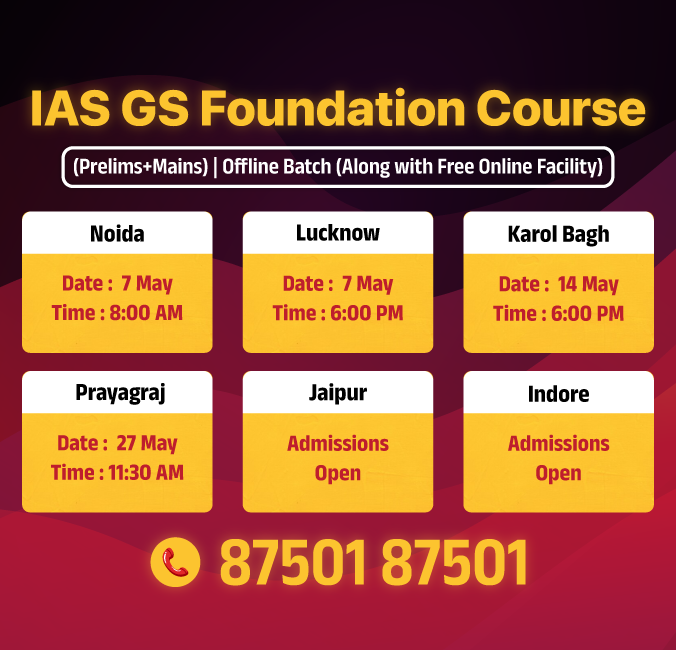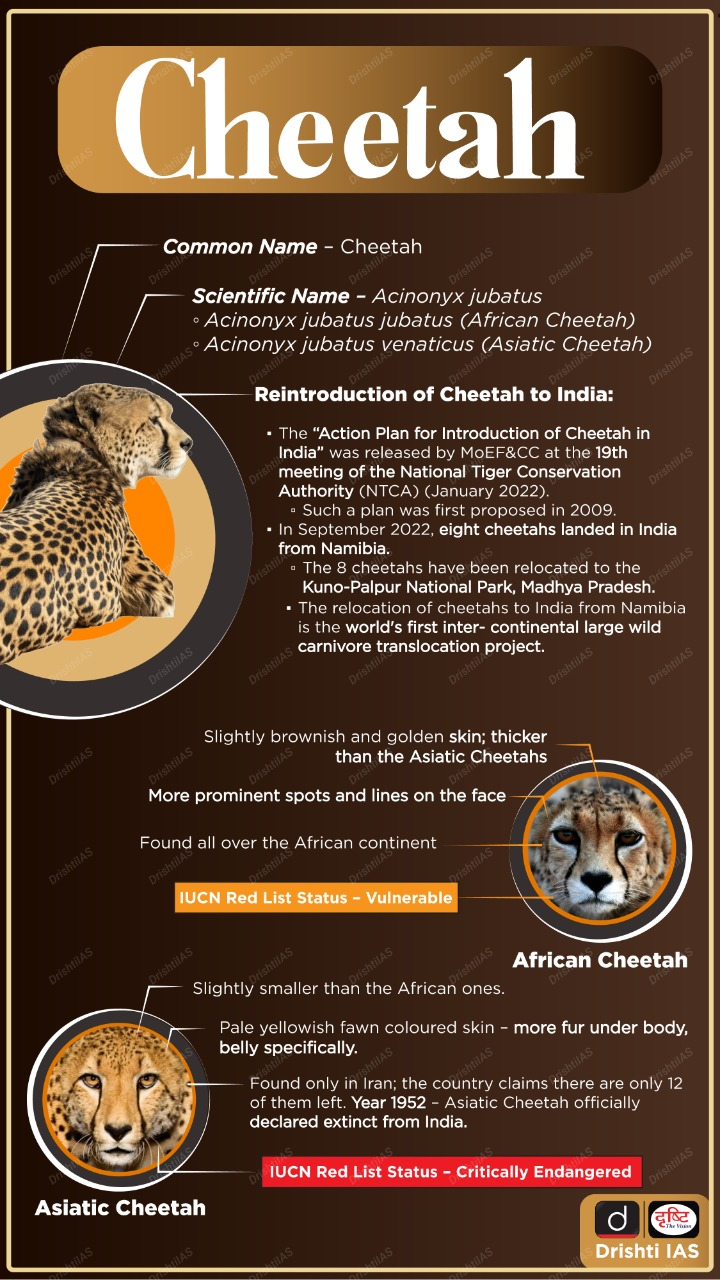Madhya Pradesh Switch to Hindi
India to Bring Cheetahs from Botswana
Why in News?
To revitalize the cheetah rehabilitation efforts in India, eight cheetahs will be brought from Botswana in two phases.
- As per the National Tiger Conservation Authority (NTCA), the process is underway to bring more cheetahs from South Africa and Kenya.
Key Points
- Rehabilitation of Cheetahs:
- Project Cheetah, launched in 2022, is India’s ambitious initiative to reintroduce the extinct species of cheetahs in the wild.
- So far, more than Rs. 112 crore has been spent on the project, with about 67% allocated to cheetah rehabilitation activities in Madhya Pradesh alone.
- Cheetahs will be rehabilitated in the Gandhi Sagar Wildlife Sanctuary located in Madhya Pradesh.
- Located near the Rajasthan border, Gandhi Sagar will serve as a second home for the cheetahs, following the Kuno National Park.
- An inter-state conservation corridor is being developed through an agreement between Madhya Pradesh and Rajasthan.
Gandhi Sagar Wildlife Sanctuary
- It is located in Madhya Pradesh on the northern border of Mandsaur and Neemuch districts adjoining Rajasthan.
- It is characterized by vast open landscapes and rocky terrain.
- The vegetation includes northern tropical dry deciduous forest, mixed deciduous forest, and shrubland.
- The sanctuary is home to various flora, including Khair, Salai, Kardai, Dhavda, Tendu, and Palash.
- Its fauna comprises species such as chinkara, nilgai, spotted deer, striped hyena, jackal, and crocodile.
National Tiger Conservation Authority (NTCA)
- It is a statutory body under the Ministry of Environment, Forest and Climate Change.
- It was established in 2005 following the recommendations of the Tiger Task Force.
- It was constituted under the provisions of the Wildlife (Protection) Act, 1972 (amended in 2006) with the powers and functions entrusted to it, it aims to strengthen tiger conservation.


Madhya Pradesh Switch to Hindi
Jal Ganga Sanvardhan Abhiyan in MP
Why in News?
Under the Jal Ganga Sanvardhan Abhiyan (Water Ganga Conservation Campaign) in Madhya Pradesh, the "Paani Chaupal" organised by the Horticulture Department in every village has become a major center of attraction.
Key Points
- About Pani Chaupal:
- In these Pani Chaupals, field staff are educating village farmers about water conservation, the cultivation of crops that require less water, integrating agriculture with horticulture for higher profits, and imparting knowledge about new horticultural techniques.
- Additionally, during the campaign, online registrations are being made for the benefits of schemes such as fruit orchards, drip lines, plastic mulching, vegetable areas, spice areas, and flower area expansion plans.
- Under the Prime Minister's Agricultural Irrigation Scheme "Per Drop, More Crop", the Department of Horticulture and Food Processing has set a target to provide 76.68 crore rupees worth of sprinkler and drip facilities to 13,500 farmers.
- The target also includes planting fruit plants on nearly 5,000 hectares, conducting workshops on appropriate water management through micro-irrigation using available water in all development blocks, and ensuring the availability of over 25 lakh fruit-bearing plants for the campaign.
- To fulfill these objectives, farmers are being provided with information about the online application process at the Pani Chaupal.
- Jal Ganga Samvardhan Abhiyan:
- The campaign, which began on the banks of the Kshipra River on 30th March 2025, will continue until 30th June 2025.
- Objective:
- The main objective is to conserve and revive the water structures (rivers, ponds, wells, stepwells etc.) of the state.
- This also includes a plan to purify dirty water drains under Swachh Bharat Mission-2.0.
- Efforts are being made by the urban bodies to ensure the participation of citizens, especially women, in this campaign.
Pradhan Mantri Krishi Sinchayee Yojana (PMKSY)
- The scheme was launched in the year 2015 with the aim of ensuring adequate availability of water for agriculture, expanding the cultivable area under irrigation, improving water use efficiency and promoting sustainable water conservation practices.
- This is a centrally sponsored scheme with Centre-State sharing ratio being 75:25.
- In the case of North-Eastern region and hilly states, this share is in the ratio of 90:10.










%20MPPCS%202025%20Desktop%20E.jpg)
%20MPPCS%202025%20Mobile%20E%20(1).jpg)





















 PCS Parikshan
PCS Parikshan


